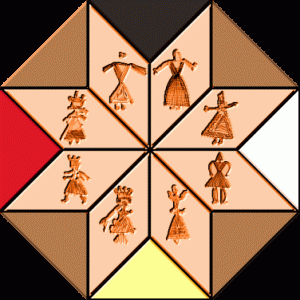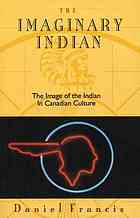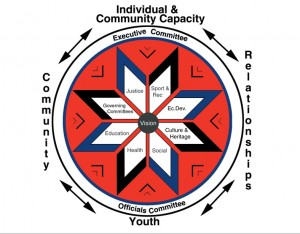Here are a list of videos that I found really interesting outlining Aboriginal astronomy. The history of the relationship between oral tradition and astronomy is presented visually. Such a resource would be useful within the classroom within activities that would require students to create visual representations of traditional narratives.
Author Archives: danishaw
Module 4-Empowering Aboriginal Youth with technology
The Eel Ground First Nation community in New Brunswick does not only provide technology incorporated learning opportunities to their students, they empower them to take charge of their own learning and learn with technology by manipulating various technology tools themselves. It is because of the focus on life-long learning with technology that warranted them one of Canada’s most technically advanced schools by the SchoolNet organization.
Here is a link tho the Eel Ground First Nation school: http://www.eelgroundschool.ca/
Here is a link to a government announcement on the award: http://www.ainc-inac.gc.ca/ai/scr/at/nwrm/gn/efn-eng.asp
Module 4- Do you speak my language?
The youth of the We’koqma’g First Nation community in Cape Breton, Nova Scotia examine why a lot of the youth are not speaking the Mi’kmaq language. In doing so, the youth interview both the children as well as the elders of the community to get a glimpse into the present day culture. Some suggestions point to the influence of current technologies such as gaming and media as a reason as to why they are losing their language. The original music and technological competencies displayed by the youth are awesome!
Do You Speak My Language? from First Nation Help Desk on Vimeo.
Module 4- Mi’kmaq Resource Centre
http://www.cbu.ca/mrc
Hosted by Cape Breton University, this site provides a wealth of information for both Aboriginal and non-Aboriginals by serving as a repository of historical and up to date data. Some resources I found useful are the presentation of Mi’kmaq history, the time-line of important Mi’kmaq events, a list of related websites, and a collection of essays dealing with the Mi’kmaq culture.
One essay I found very interesting and insightful was written by Dr. Marie Battiste (1998) is entitled, “Enabling the Autumn Seed: Toward a Decolonized approach to Aboriginal knowledge, language, and education.”
Module 2- Mi’kmaq Spirit Homepage
http://www.muiniskw.org/index.htm
This website hosts a great deal of factual information on the Mi’kmaq of Atlantic Canada. Main sections offer information on history and culture with historical timelines, language explanations, explanations of daily life, oral traditions, etc. In addition, a section is included on issues, whereby people are welcomed to submit essays on topics relevant to the Mi’kmaq people and culture.
Module 2- The Imaginary Indian
Although not an online resource, this book serves as an excellent resource for all educators. I first read this text in during my B.Ed program at Acadia University, Wolfville, Nova Scotia. The author discusses an array of topics that follow the “image” that was created by colonization. Excerpts can be attained here from GoogleBooks although I encourage reading it in it’s entirety.
Francis, Daniel. The imaginary Indian: the image of the Indian in Canadian culture. Vancouver, B.C.: Arsenal Pulp Press, 1992. Print.
Module 2- Glooscap Heritage Centre
This website can be used in conjunction with the resources available at the Glooscap Heritage Centre in Truro, Nova Scotia. Named after a figure often found in many Mi’kmaq legends, both encompasses a great deal of Mi’kmaq cultural information, history, and knowledge. Although only in it’s infancy, the website hosts online training, media, and educational resources.
Module 3- Mi’kmaq Portraits Collection
http://museum.gov.ns.ca/mikmaq/
This resources contains over 700 images and illustrations from the Mi’kmaq community. I was first torn to include it in my weblog as a resource because the initiative was not created and controlled by the Aboriginal community. I do however find a lot of the images to be powerful and interesting therefore I decided to include them within the module. The archival information I believe, presents a visual element in a culture that is rooted greatly in oral tradition. The visual component and resources, could be used within the classroom as an activity to have students (both Aboriginal and non-Aboriginal) create narrative to encompass each of the diagrams. I it useful that the dates were included therefore students would be able to create the narrative based on the approximate historical background. Furthermore, some of the illustrations could be used to initiate classroom discussion on colonization and the roots of Western stereotypical attitudes.
Module 3- The state of Aboriginal learning in Canada: A holistic approach to measuring success
http://www.ccl-cca.ca/CCL/Reports/StateofAboriginalLearning.html
This website contains information on the current initiative of assessing Aboriginal students holistically. The core focus of the site is the 2009 report whereby a set of criteria for successful Aboriginal learning was created. Based on the findings of the Canadian Council of Learning, Aboriginal learning environments must be:
- Holistic (focuses on the emotional, physical, intellectual, and spiritual elements of the individual while stresses the relationship with the Creator)
- Lifelong (Skills that are learned at an early age will be used until old age and transferred to following generations)
- Experiential (Learning activities enable students to make connections to their lived experiences while providing them with opportunities to participate in traditions such as storytelling, meditation, and cultural ceremonies.)
- Aboriginal language and culture must be emphasized during all learning activities.
- Spiritual based (Students must be presented opportunities to partake in spiritual experiences which serve as “the pathways of knowledge”. Examples of such are ceremonies, vision quests, and dreams.)
- Community based (Education must be supported at the community level by parents, elders, the Aboriginal community as a whole.)
- Incorporates both Aboriginal and Western knowledge. (Activities and educational practices are rooted in the best practices)
Module 3- Tripartite Forum
http://www.tripartiteforum.com/
This forum serves as a place to resolve common concerns between the Nova Scotia Mi’kmaq community and governments both at the provincial and federal level. Created in 1997, the main purpose of the union is to create a common vision and set of goals that will support the various communities in being “vibrant Mi’kmaw communities through partnership, commitment and respect”.
What makes this website and the included documents and resources valuable is the constant focus on the need for all agencies (both indigenous and non-indigenous) to work together, collaborate, and respect others at all times. Below is an image taken from the website that describes how all of the various committees within the forum are connected. In connection to module’s 3 focus on aboriginal youth, notice the role/focus of youth within the diagram. The main goal associated with youth are to ensure their success by scaffolding them during their path of life-long learning. In doing so, the forum hopes to involve youth in community decision making and governance as well as to encourage active healthy living.
Tripartite Forum : A partnership of: Mi’kmaq + Nova Scotia + Canada. Tripartite Forum : A partnership of: Mi’kmaq + Nova Scotia + Canada. Retrieved July 7, 2011, from http://www.tripartiteforum.com/



